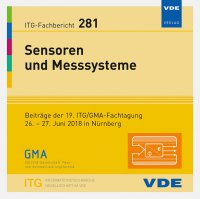Process control of carbonitriding
Conference: Sensoren und Messsysteme - 19. ITG/GMA-Fachtagung
06/26/2018 - 06/27/2018 at Nürnberg, Deutschland
Proceedings: Sensoren und Messsysteme
Pages: 4Language: englishTyp: PDF
Personal VDE Members are entitled to a 10% discount on this title
Authors:
Kluemper-Westkamp, Heinrich; Skalecki, Marian Georg; Zoch, Hans-Werner (Leibniz Institute for Materials Engineering IWT Bremen, Badgasteiner Str. 3, 28736 Bremen, Germany)
Abstract:
Carbonitriding followed by hardening serves to increase the strength and wear properties of steel components. Components are treated at temperatures of 760 to 930 °C in carbon and nitrogen emitting gaseous media. For the performance characteristics of the treated steel components, the set carbon and nitrogen concentrations and their depth profiles play an essential role. Optimum profiles produce an ideal microstructure of martensite, retained austenite, finely distributed nitrides and carbonitrides as well as residual compressive stresses in the surface region. The process-reliable use of the treatment depends strongly on the control options. Automation focuses on the innovative approach of developing the regulation of nitrogen uptake by measuring the NH3 content in the ppm range. The regulation of the carbon uptake is done conventionally by means of oxygen probe. To round off the process reliability of carbonitriding it is necessary to simulate the carbon and nitrogen diffusion profiles. This has been developed by determining the diffusion constants, the interaction and precipitation formation with the alloying elements as well as their influence on the phase boundaries. It is illustrated which components are necessary for process automation, which chemical reactions have to be considered, which parameters of the atmosphere are used, how the control system is structured and how the simultaneous diffusion calculation works. It is demonstrated by examples how defined nitrogen and carbon depth profiles can be set and in what quality the online simulation is able to predict measured diffusion profiles.


